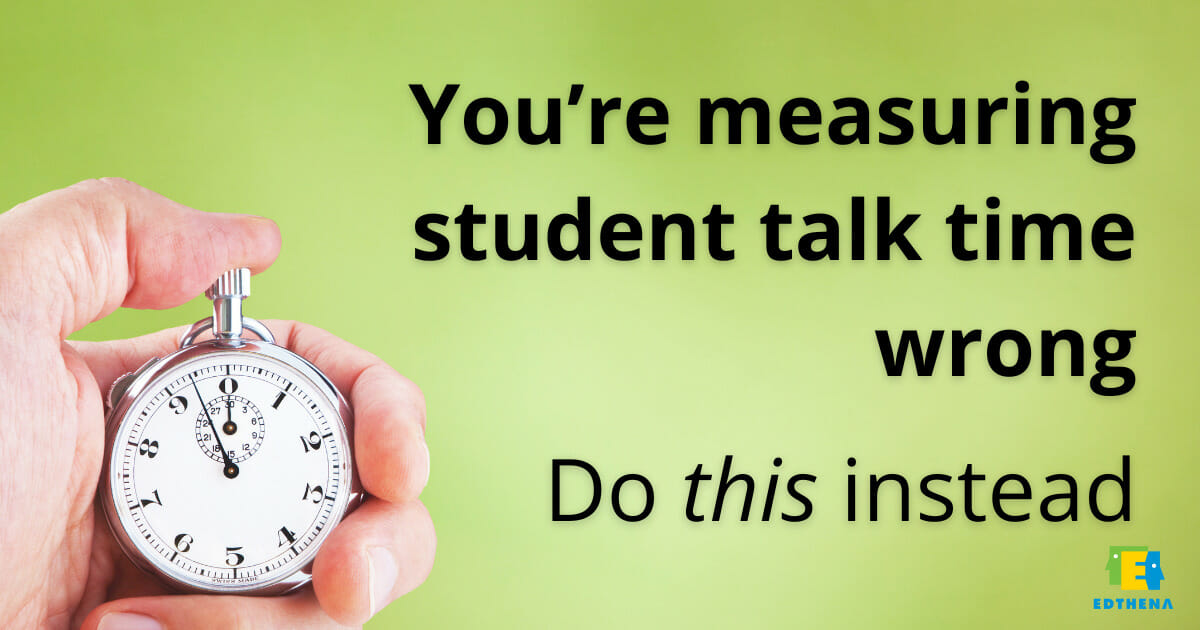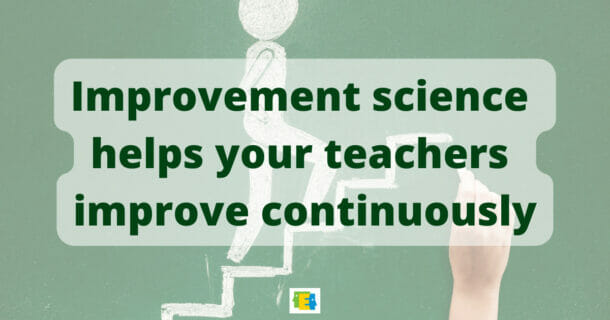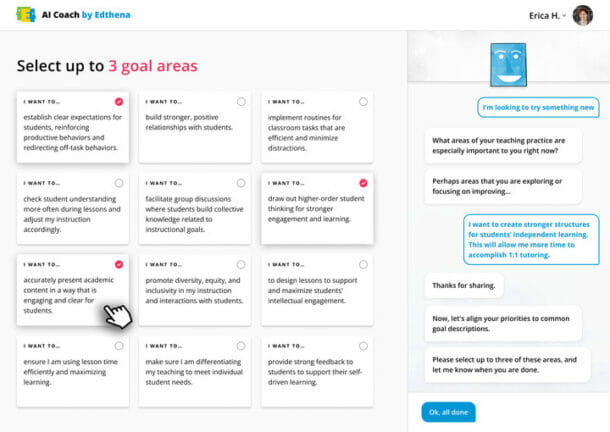You’re Measuring Student Talk Time Wrong. How to Really Analyze and Improve Classroom Engagement

Measuring classroom engagement doesn’t seem complex – anyone can use tally marks to count, and then try to increase the minutes of student talk time or number of hands raised.
But having students talk more doesn’t cut it for accurately gauging if they are engaged in productive learning. And without solid insights about student engagement, teachers can’t efficiently improve their instructional practices.
If you’re a school leader or coach supporting teachers to improve classroom engagement, you’ll need to look beyond raised hands.
We’ve outlined how educators can analyze student talk time and teacher talk time to better understand student learning.
Plus, read for best practices for how teachers can take a structured approach to implementing next steps to improve classroom engagement.
How to Really Analyze Teacher Talk Time for Student Engagement
One way to consider student engagement starts with looking at teacher talk time. This goes beyond just minimizing teacher talk in order to increase student talk, though.
It’s important for teacher talk to be clear, concise, and focused on driving students’ productive learning.
One of the best ways to gain insights from teacher talk is, in the words of Jim Knight, to access a clear picture of their current reality with classroom video.
Teachers first record videos of their classroom instruction in order to gain accurate classroom evidence of their teacher talk.
As they review their classroom video, teachers can easily count the number of times they spoke and for how long.
But for more meaningful analysis, teachers need to also analyze their talk time for specific instructional strengths and areas for growth aligned with increasing student engagement.
When analyzing teacher talk time for insights about student learning, look for these skills:
- Clarity in presenting academic content
- Questioning techniques that elicit student thinking
- Facilitating productive student discussion and dialogue
This reflection on teacher talk time can yield a lot of information and ideas about how to improve instruction to be more engaging, but trying multiple ideas at once will not be effective.
Picking one thing to work on at a time helps teachers make instructional changes in a measurable and iterative way and is based on the research of improvement science.
Once teachers pick one thing to change within their classrooms, they should pre-plan how they will collect new data to measure the impact on student engagement. Then teachers will be able to assess if the change worked and if they should continue this practice within their teaching.
This disciplined approach empowers teachers with the ability to improve their teacher talk time in measurable ways before immediately moving on to other instructional skills.
How to Truly Analyze Student Talk Time for Student Engagement
It may seem obvious that understanding student engagement involves looking at student talk time.
However, students don’t need to just talk more, and every minute of talking doesn’t necessarily indicate the same depth of learning.
How can teachers as well as PD and school leaders gather more meaningful insights about student engagement?
Similar to analyzing teacher talk time, reviewing student talk time is more effective when done looking at classroom video after a lesson instead of trying to gain deeper insights in the moment.
While watching and reflecting on a teaching video, you can begin by tallying hands raised or the number of students participating. But again, you’ll want to go beyond these surface observations.
Analyze student talk time by asking these questions:
- What do student responses show about mastery or misconceptions about academic content?
- How does student talk engage other students as learners, not just the teacher?
- How are students taking risks and engaging in productive struggle?
With this deeper understanding of what student talk time demonstrates about classroom learning, teachers are empowered to try student-facing classroom strategies that can improve engagement.
Just like with addressing teacher talk time, it’s too complex to address various elements of student talk simultaneously.
Improvement science research supports picking one strategy or change to make at a time. Teachers should identify a single classroom technique to try and then measure its impact on student talk time to determine if they will continue using it.
This structured approach helps educators more effectively implement concrete and focused next steps to improve classroom engagement.
Use tech to help teachers analyze teacher-student talk time and work on instructional skills on their own
When teachers are measuring classroom engagement, they need to first cast a wide view to collect and analyze various pieces of teacher and student talk time data.
But when it comes to instructional improvement, teachers often need support to go from big-picture thinking and reflection to bite-sized classroom implementation.
This is often why coaching is so important for teachers—to provide guidance in the complex thinking work required for understanding and implementing different teaching practices.
AI Coach by Edthena is a platform that supports teachers with a computerized coach who guides them in “looking big” and then picking one skill or strategy to work on, with a way to measure impact on student engagement.
First, teachers are asked to focus a video reflection on specific instructional skills, such as facilitating group discussions or eliciting student thinking through questioning.
As they analyze teacher and student talk time in their classroom videos, teachers access personalized reflection questions to prompt deeper insights about their instruction and student engagement.
A key step in this independent teaching analysis comes next when teachers receive support and guidance for developing their plan for implementing a bite-sized action step and then monitoring progress.
The AI Coach platform provides a guided process for teachers to:
- identify dates for next steps and classroom data to gather
- assess the impact of any change on student engagement and learning, and
- determine if they will continue the change or try another strategy
This provides teachers the structure to work on a single skill or strategy and determine if it impacts student engagement in their classroom before trying another idea. This is aligned to the best practices of improvement science.
Also crucial for educators? AI Coach provides a secure and private place to record and synthesize findings about student talk time and learning.
Deeper analysis of talk time can reveal more about classroom engagement
Student engagement is a major component of active student learning. To better understand how students are engaging in the classroom, it’s important to look and listen more closely to teacher talk and student talk time.
This can generate a lot of exciting insights and ideas to try in the classroom!
Educators and school leaders should remember that trying and measuring one strategy at a time is more effective for continuous improvement.
A version of this article appears on The Learning Counsel website. Click here to read it.

